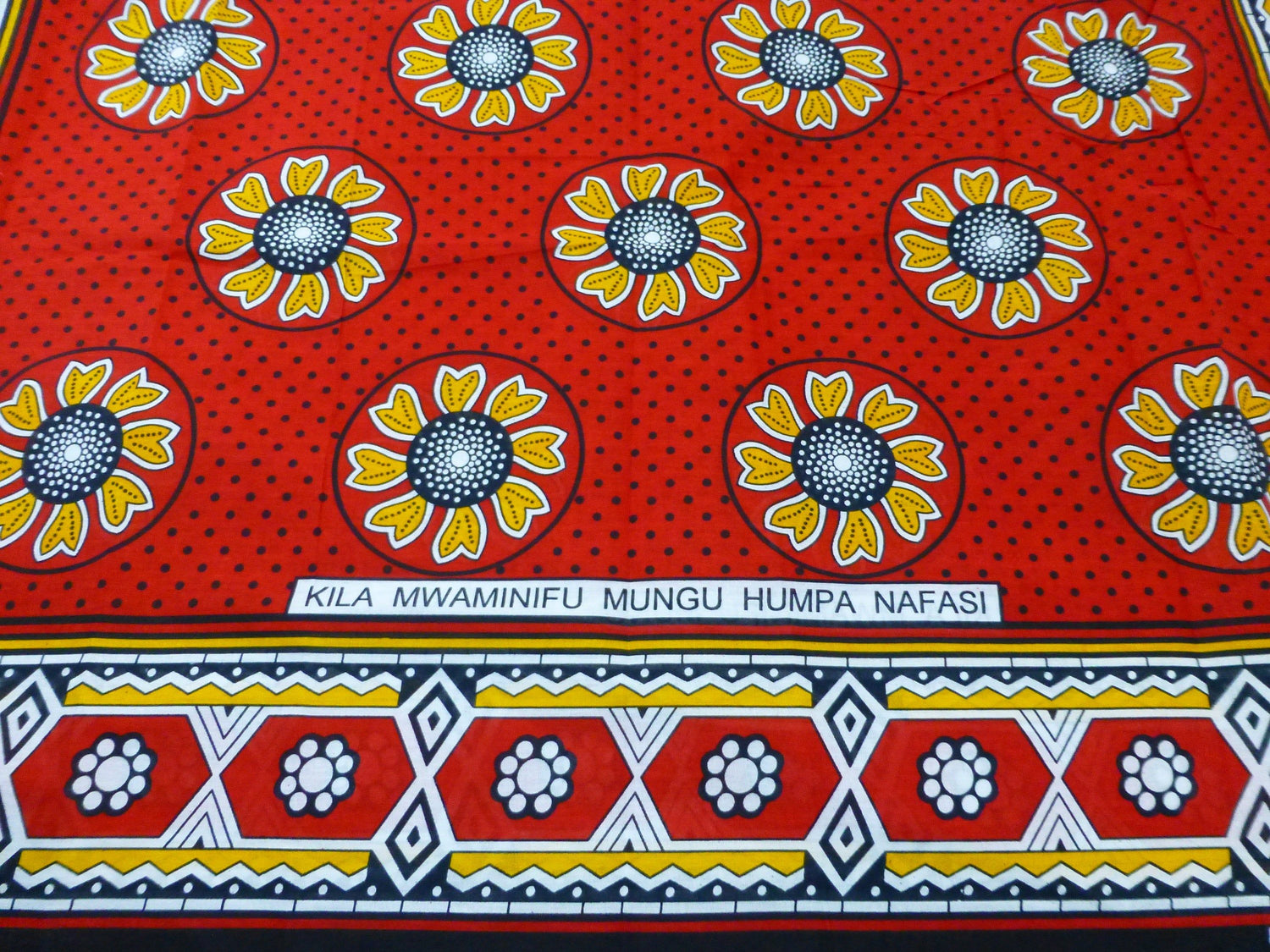About Kanga Fabric
Kanga Cloth: Africa's Fabric of Tradition
The Kanga is a colorful fabric worn by women and occasionally by men throughout the African Great Lakes region. It is a piece of printed cotton fabric, about 1.5 m by 1 m. It is typically multi-colored, often with a border along all four sides. The original kanga had dots black and white just like Guinea fowl.
Kanga is the most popular fabric in East Africa. It can be used as a wrapping cloth for newborns, as a scarf, a shawl or an accessory on your suit. Moms carry the kids with it, women buy and collect these fabrics as a way to save money and they sell it when they are in financial trouble, every kanga is unique - never printed twice, people even fish with kanga! they decorate the house with it, it is everything to the village.
History of Kanga
Kanga’s origins are unclear but it can be traced back to at least the 9th century AD, when Arab traders used them to transport goods along the coast. In the 19th century, British explorers such as David Livingstone used Kangas to explore Lake Tanganyika and Lake Malawi. They also played an important role in colonial trade and exploration.

Communication Through Kanga
Kanga is an important communication vehicle in Swahili culture. It is used to express thoughts, ideas and emotions via the spoken word or written words. In today’s world, the Kanga still plays an important role to empower women to express themselves. Messages today often derive from Swahili methali (proverbs), mafumbo (ambiguous meanings) and misemo (popular sayings) inspired by folklore, riddles, children’s songs and quotes from the Qur’an as well as popular culture. Still others come out of song lyrics from the coast’s unique Taarab style of music.
Samples of the Proverbs are:
Majivuno hayafai: Greed is never beneficial
Mkipendana mambo huwa sawa: Everything is alright if you love each other
Japo sipati tamaa sikati: Even though I have nothing, I have not given up my desire to get what I want
In short, these brightly colored fabrics are an important part of Eastern African culture and have been for centuries. They are seen in nearly every aspect of life; they're worn, traded, made into other objects and sold throughout the region, and even function as currency. No matter how you slice it, Kanga holds a special place in the hearts and minds of the people that surround it, as much as if not more so than any other fabric in their native Africa.
Fabric is everything in Africa. It's got a very special place in African culture. They collect and make fabric arts to sell and barter other things like food and the goods in the village. Kanga is an experience (informative), it is history and story (engaging), it is talent and personality (authentic), and functional (practical).
